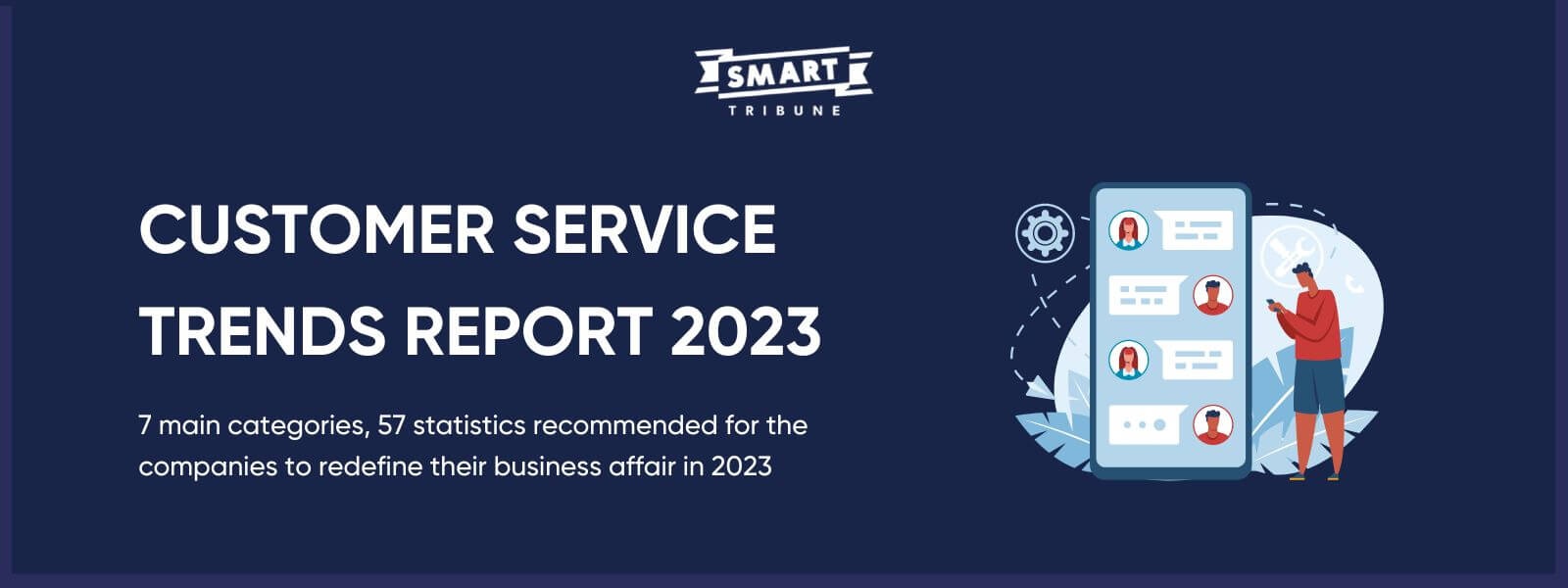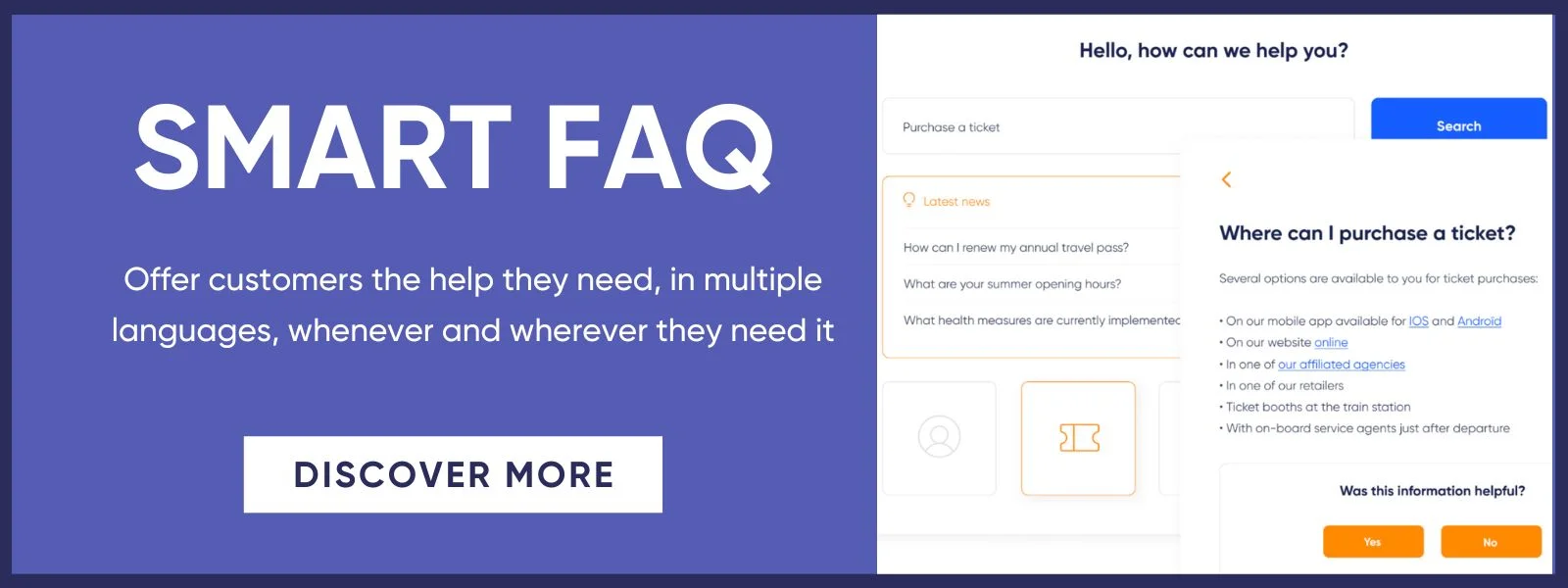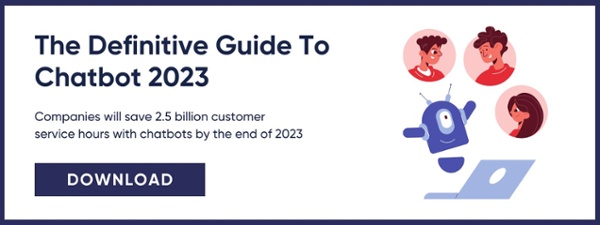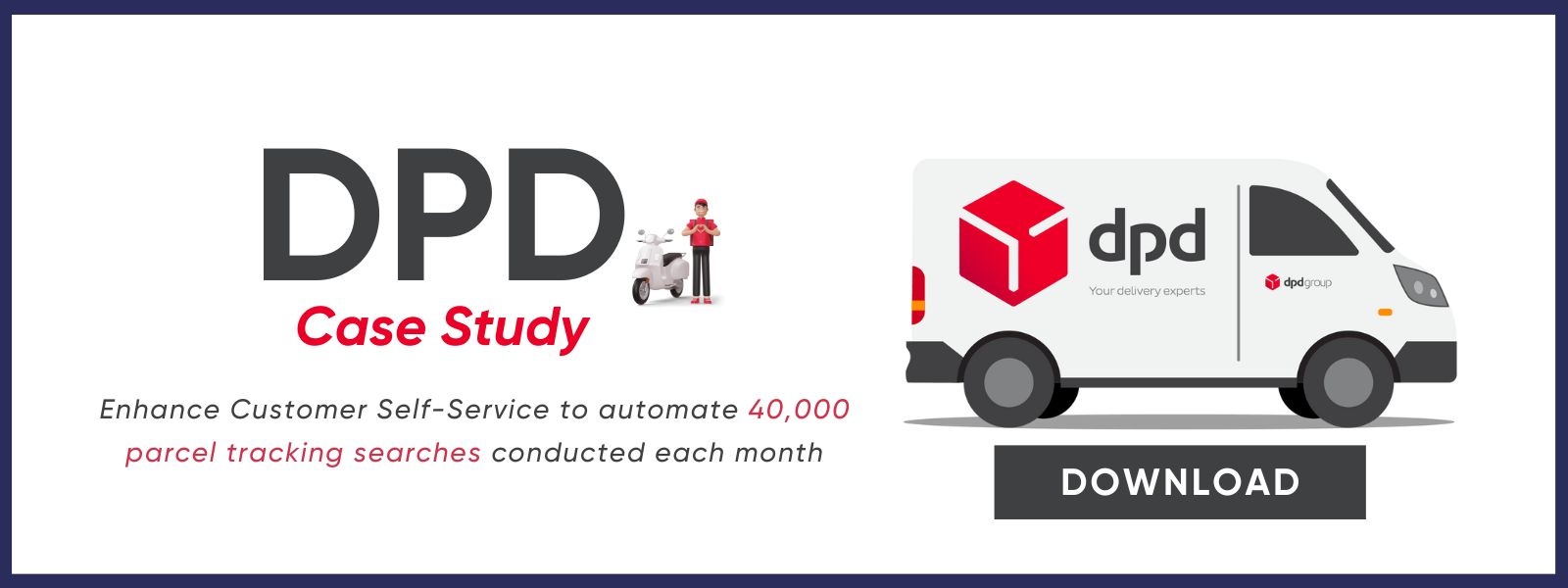
On JULY 28, 2020
How Customer Self-Service Can Come to the Rescue During a Crisis
Faced with the current health and economic crisis, many brands have had to shift their operations entirely to meet the ever-growing and ever-changing needs of their customers. In many cases, this has also led to slower response times to customer queries. But at a time when people’s lives are going through significant change, brands have an important role to play in reassuring their customers that business is still moving forward “as usual.”
Crises like these create new opportunities for brands to create stronger relationships with customers and engage with them in different ways. As consumer buying habits and general day-to-day needs continue to shift rapidly as the coronavirus pandemic fails to disappear, is there an opportunity for customer self-service to come to the rescue? If so, what are the short- and long-term advantages of this? Let’s dive in to answer these questions.
Customer self-service and the COVID-19 pandemic
A quick definition of customer self-service
Customer self-service basically means giving customers multiple ways to get immediate answers to their questions on their own—at any time of day, on any device, and in whatever format is most convenient for them to use at any given point in time. This can take on the form of dynamic help centres to AI-powered chatbots to contextually relevant help widgets (and more!).
According to a recent Forrester study, 72% of consumers say that they want to be able to solve their problems or issues on their own without having to engage with a living and breathing customer service agent. In this way, customer self-service immediately addresses a pressing consumer need.
The biggest benefit here is simple: customer self-service can provide the right information in the right place, at any time, instantly, throughout the entire customer journey. It is customer service that never sleeps; customer self-service operates 24/7.
COVID-19’s impact on businesses and consumer habits
The novel coronavirus pandemic has impacted businesses in multiple ways. Every business sector, even those that have generally continued to thrive during this crisis, have experienced significant shifts or steep declines in business activity.
The travel and hospitality industries, for example, have been some of the hardest hit—and will most likely be the slowest to rebound—whereas grocery stores, e-commerce businesses, and major marketplaces, like Amazon, have become more essential than ever.
These seismic shifts in business activity have altered consumer behavior in noticeable ways. You likely remember, at the onset of the pandemic, when grocery stores were emptied out and essential goods, like toilet paper and canned food, were almost nowhere to be found.
This was the epitome of “panic shopping” at its very best. Uncertain as to what the future would hold, consumers defaulted to their most primal, physiological needs to ensure they would have plenty of supplies “on reserve” to survive, regardless of how the pandemic unraveled.
However, as people have slowly grown accustomed to this new way of life, general consumer needs, daily behaviors, and ongoing shopping habits have followed in suit. For example, more people are working remotely than ever before—with many companies around the world not requiring employees to return to the office through the remainder of 2020.
The so-called “virtualization” of work life has trickled into personal life as well, with the end result being more consumers transacting almost purely online for everything from grocery shopping to purchasing big ticket appliances and electronics.
Therefore, it goes without saying that the COVID-19 pandemic has rattled business activity and consumers habits to the very core. What was normal pre-pandemic is far from today’s reality.
The need for accurate information and quality support has increased tenfold
Over the last few months, the world has found itself under an enormous amount of stress. When any kind of crisis strikes, customer service tends to be the hardest hit department within any business. After all, customer support agents are on the frontline to help customers with their pressing needs. And while customer service queries have started to drop since hitting a fever-pitch in mid-May, customer service, as a whole, continues to play an essential role in helping consumers overcome the many challenges associated with this health and economic crisis.
Unfortunately, as the number of customer service requests increase, the time it takes to process and resolve those requests get drawn out as well. This is precisely where a customer self-service solution—like a dynamic FAQ—comes in handy. Powered by your own knowledge base, these tools can respond to upwards of 70% of your customers’ most frequently asked questions without needing human intervention whatsoever.
This is especially the case when people are simply looking for information like store hours, delivery times, and the like. This kind of information doesn’t require a customer service agent to step in. In fact, doing so takes them away from handling more complex support requests that really need their attention.
Since the beginning of the crisis and throughout the lockdown period, consumers have begun asking brands more questions than ever before, up to three times more as this crisis has rattled on.
We’ve also seen visits to the FAQ pages of Smart Tribune’s customers increase significantly within certain sectors while, unsurprisingly, dropping in others. Dynamic FAQ queries within the energy, fashion, and travel sectors dropped by 25%, 17%, and 4%, respectively, while they increased by 4%, 60%, and 90% for the e-commerce, press/communications, and delivery sectors.
And as consumers got more and more into “survival of the fittest” mode, we saw queries about DIY and home improvement skyrocket by a whopping 970%.
"Deploying customer self-service in times of crisis responds to this growing need for greater autonomy, which now plays a bigger role in daily consumer life."
Jérémy Gallemard, Founder and Managing Director of Smart Tribune
Because the world now feels more and more out of control, consumers are actively searching for ways to control even the smallest parts of their daily lives. This need goes hand-in-hand with a growing expectation for autonomy within the customer service experience. Your customers want to get the information they need from you whenever they need it—and they’d prefer to do this themselves.
This is why you have to think of your website as more than just a “storefront” or as an e-commerce point-of-sale. Your website must be a source of information that your customers rely on. Implementing customer self-service solutions into your website can help you deliver on this for your customers.
Give your customer support team reprieve in times of crisis
How customer self-service amplifies your broader customer service experience
When faced with an increasing number of customer questions, concerns, and needs, companies have no choice but to adapt their customer service strategies. Fortunately, customer self-service can help alleviate the pressure placed on customer support teams during times of crisis. Here are a few of its key advantages worth noting:
- Customer self-service helps reduce contact rates by as much as 50%, simply by automating responses to level 1 requests. These are things like asking for store hours or return policies, low-value inquiries that, when not automated, can drain a support team’s time and energy and, conversely, make it harder for them to dedicate time to more complex customer issues.
- Customer self-service helps create a better overall experience that customers have with your brand—increasing customer satisfaction rates by 10-15 points—and boost customer loyalty.
- Customer self-service helps keep sales flowing by increasing conversion rates by as much as an average of 10-20%—even during times of crisis.
Customer self-service helps ensure customers get the support they need whenever they need it; it’s an ‘always on’ solution that can field the majority of customer questions whether or not supports agents are available or on the clock.
4 great ways to use customer self-service to give your support team room to breathe during a crisis
When customers are in crisis mode, they need answers—and they need them, fast. Choosing the right customer self-service channels to support your customers when and where they need it most is absolutely critical. Whether you decide to implement a dynamic FAQ or an AI-powered chatbot (or both), it’s important to keep in mind that each plays a different role in responding to customer needs.
A dynamic FAQ, for example, makes information easily accessible across a brand’s entire website whereas a smart chatbot can engage customers in an automated conversation to carry out an action. And even though the information that powers them both lives in a central knowledge base, the way in which your customers can access that information will vary based on the channel they choose.
Even so, there are some best practices to follow when implementing customer self-service solutions:
1. Optimize your FAQ content
Your FAQ needs to be the “source of truth” for your customers. As such, the content must be short, simple, and concise, addressing the specific questions at hand without becoming too general.
Additionally, because FAQ content can impact your on-site SEO, it’s important to keep your answers as focused and as customer-centric as possible at all times. When relevant, drive immediate action by adding a specific call-to-action (i.e. link to a landing page, form to fill out, etc.).
2. Leverage chatbots to automate specific actions
Chatbots are essentially conversational FAQ’s. They are limited only by the number of precise actions (in the form of questions and answers) that you let them handle on their own. To create a better customer experience with a chatbot, be sure to have the chatbot state upfront the parameters of what it can do, all in a friendly and conversational tone.
Throughout the conversation the chatbot will pull information directly from your knowledge base to answer level 1 inquiries. If the conversation crosses into level 2 territory, it will use its intelligence to escalate the issue to a living, breathing customer support agent.
3. Provide access to information throughout the entire customer journey
Consumers today are inundated with information overload. Although the length of a human’s attention span is debatable—in spite of Microsoft’s once widely touted eight-second rule—it goes without saying that people today have very little patience to search for information. In other words, when your customers need help, they want instant gratification.
That’s why it’s so important to put the right information in front of your customers wherever they go on your site—whether through dynamic FAQ, smart chatbots, or embedded help widgets. Providing omnichannel customer self-service is the key to reassuring and supporting your customers throughout the customer journey.
4. Collect feedback from customers to make your responses better
You should be on a mission to improve your knowledge base content at all times. A great way to do this is by inviting your customers to provide feedback on what information was useful as well as what information could be improved. Your customers are truly your best resource; they know more about what they need than you even do.
By proactively asking them to provide input on your responses, you can successfully optimise your knowledge base content over time. Asking questions like, “Was this information helpful?” is a great way to gauge immediate success. If a customer answers negatively, it opens up the door for them to provide specific feedback on what could be improved.
What has this crisis taught us?
The COVID-19 pandemic has fundamentally changed the trajectory of customer service. Every business has been impacted, both internally, with regards to systems and operations, and externally, with regards to customer relationships. Everyone has had to adapt to a new normal—one that continues to evolve more and more as this crisis unfolds with each passing day.
What we’ve found is that customer self-service is not only the best way to help your customers overcome many of the challenges they’re facing amidst this crisis but also a timely opportunity to transition into the future of customer service. Let customer self-service come to the rescue!






.png)



